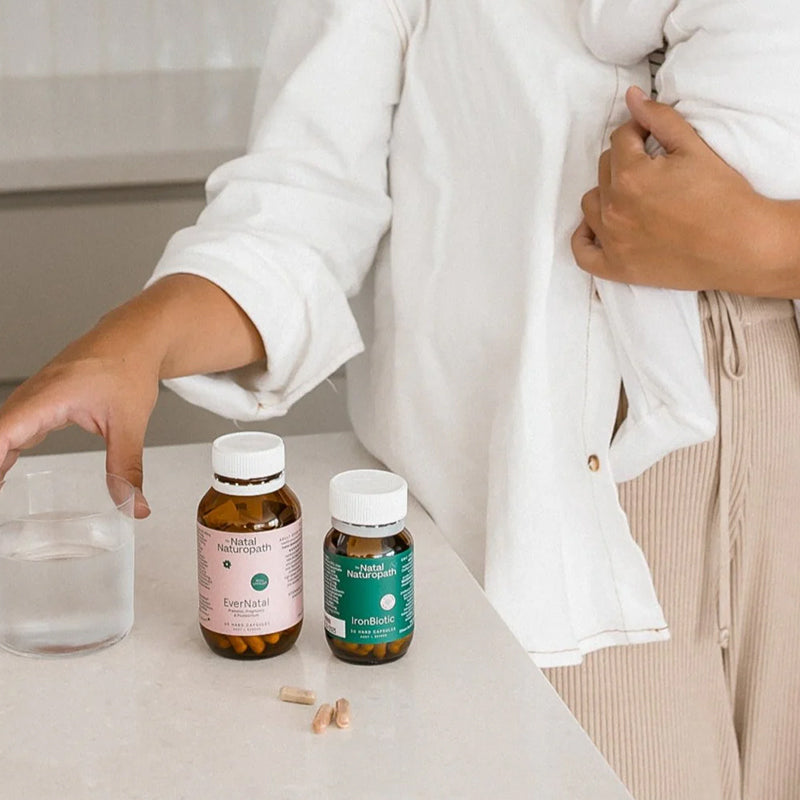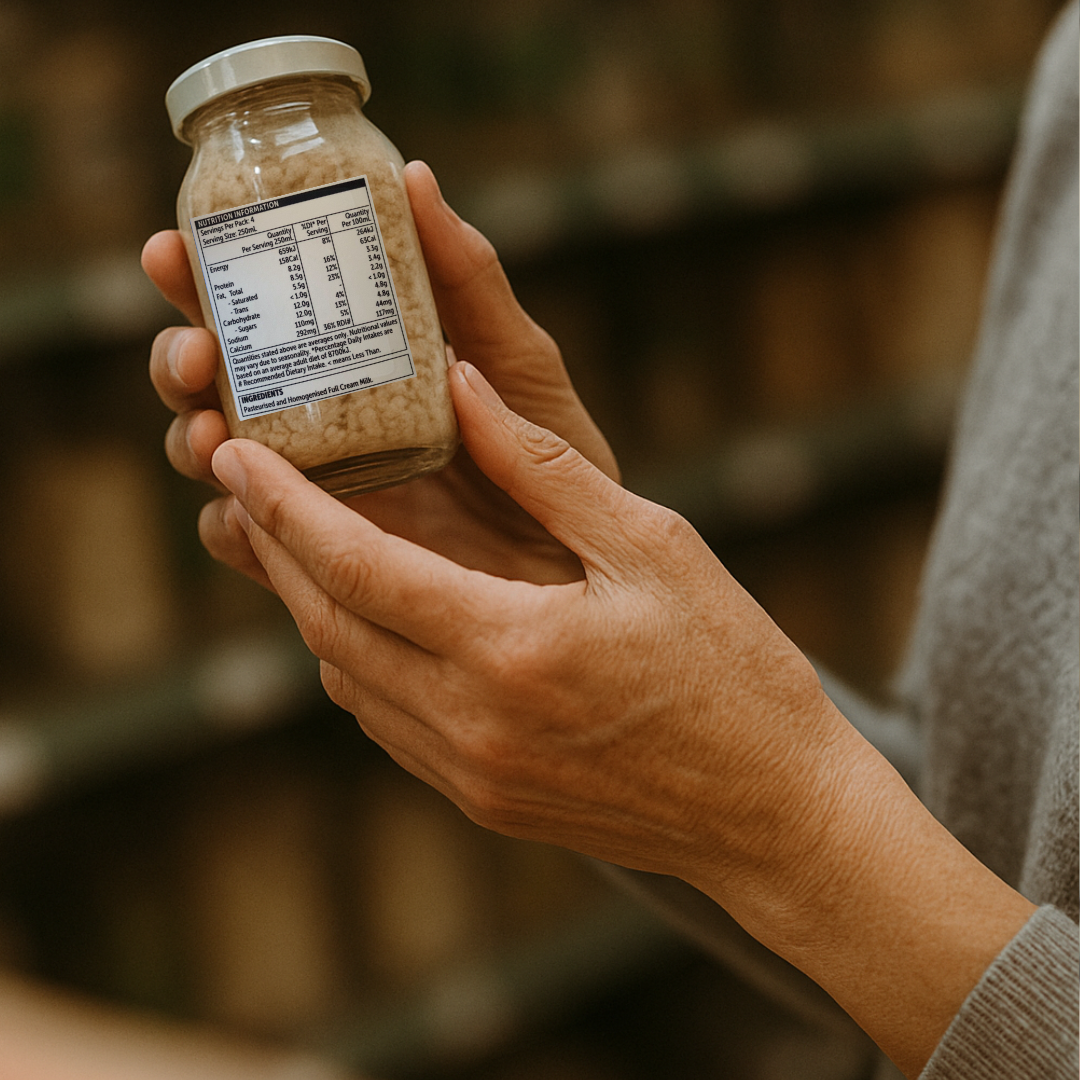In today’s fast-paced world, where convenience is king and supermarket shelves are lined with endless packaged options, it can be so hard to tell what’s actually real food.
While the gold standard is to lean towards whole, single-ingredient items like oats, almonds, or rice, there are times when packaged foods are unavoidable. In these moments, knowing how to read a food label becomes a powerful tool in protecting your health and staying aligned with your nutritional values!
Let’s unpack how to navigate food packaging, decode confusing terminology, and make choices that truly nourish you.
Don’t Be Fooled by the Front of the Package
Packaged foods are designed to catch your eye.. with words like “natural,” “organic,” “low-fat,” or “sugar-free” plastered across the front. But the real story is almost always on the back. Ingredient lists and nutritional panels hold the key to understanding what you’re actually putting in your body.
The ingredient list is your first port of call. If you spot unfamiliar numbers or complex names, they’re likely preservatives, artificial colourings, flavourings, or emulsifiers. Some may be harmless, but many are best minimised, especially if you're working to support gut health, reduce inflammation, or manage hormonal balance.
Tip: Use a tool like The Chemical Maze app to look up unknown additives on the go.
The Ingredient List Is Your Best Friend
Ingredients are listed in descending order by weight. This means the first few items make up most of the product. So if sugar, refined flours, or syrupy sweeteners are high up the list, that’s a red flag.
Also, sugar can hide under many different names… glucose, maltose, dextrose, sucrose, high fructose corn syrup, just to name a few. You may need to scan closely to spot them all.
It’s also important to distinguish between added and naturally occurring sugars. For example, plain yoghurt will contain sugar, but it comes from lactose (milk sugar), not from added syrups. In Australia, food labels don’t currently separate added from natural sugars on the panel (though many of us hope that changes soon!).
How to Read a Nutrition Panel Without Getting Lost
Once you've scanned the ingredient list, it’s time to look at the nutritional panel. Start by checking:
-
Serving size: This can often be misleading. A tiny serving can make a product look healthier than it really is.
-
Per 100g column: This is more useful for comparing products, as it gives the percentage of each nutrient.
How Much Sugar Is Too Much?
As a general rule:
-
Over 15g of sugar per 100g = High in sugar
-
5g or less per 100g = Low in sugar
But always check the ingredient list to see if that sugar is coming from added sources or natural ones like fruit.
Breaking Down the Macros
Break the label down into its core components:
-
Total fat: Don’t fear fat, but do be mindful of the type. Healthy fats (like those in avocado or olive oil) are great! Trans fats and processed oils are not.
-
Carbohydrates: Look at both total and sugar content. Carbs from whole grains and vegetables are preferable to refined sugars and flours.
-
Fibre: High-fibre foods support digestion and blood sugar balance. The more, the better!
-
Protein: Essential for keeping you full, stabilising blood sugar, and supporting hormones. Check protein levels, especially in snacks and convenience meals.
The Truth About the Health Star Rating
Australia’s Health Star Rating system is meant to give a quick overview of a food’s overall nutritional profile - ranging from 0.5 stars (least healthy) to 5 stars (most healthy). But the system isn’t perfect.
Let’s compare two common items:
-
Smoked salmon scores 2 stars - despite being rich in anti-inflammatory omega-3s and healthy fats.
-
Sultana bran scores 4.5 stars, but a single bowl (often underestimated in portion size) can contain over 30g of sugar.. which is around 6 teaspoons in one hit.
This highlights a key issue: the Health Star system tends to penalise high-calorie, high-fat foods (even when those fats are beneficial), and it doesn’t differentiate well between added and natural sugars.
So, while star ratings can be a helpful starting point, they should never replace your own label-reading savvy.
Example: What’s Really in Sultana Bran?
Looking deeper at sultana bran:
-
Sugar per 100g: 28.4% (that’s high!)
-
It does contain fruit (sultanas), which naturally contributes sugar
-
But without separating added from natural sugars, you can’t know exactly how much is being added
A better option? Buy plain bran flakes and add your own sultanas! That way, you control both the portion and the sugar content.
Quick Tips for Smarter Packaged Food Choices
-
Stick to whole foods: The fewer ingredients, the better!
-
Ignore the front-of-pack marketing: Pretty colours and buzzwords don’t actually mean much.
-
Watch for misleading terms:
-
Low-fat often means high sugar.
-
Gluten-free doesn’t mean healthy if it's loaded with starches and gums.
-
Organic is great, but doesn’t guarantee low sugar or good fats.
-
Low-fat often means high sugar.
-
Consider your individual needs: A product might have a balanced panel but not serve your body well. Think energy levels, digestion, and how long it keeps you full.
Build Confidence With Every Grocery Shop
Reading food labels can feel overwhelming at first, but it gets easier with time. Once you learn which brands and products align with your values, it becomes second nature. One helpful shortcut? Shop at your local wholefood or health food store - many of these retailers do the hard work for you by only stocking items with cleaner, more honest ingredients.
And remember: real nourishment comes from real food. Packaged products have their place, but nothing beats a diet built on whole, fresh, seasonal ingredients.
From Our Naturopaths to You
At Nourishing Apothecary, we believe real health starts with small, empowered choices - like knowing what’s actually in the food you eat. As qualified naturopaths, we see every day how misleading packaging and added ingredients can impact things like energy, hormones, digestion, and blood sugar. That’s why we’re so passionate about helping you decode the label and return to foods that truly nourish!
Our Food & Drink collection is curated with the same care we bring to our clinic work -focusing on non-toxic, nutrient-dense, & sustainably sourced ingredients that support real, long-term wellness. From superfood powders to blood sugar–friendly snacks and herbal teas, we only stock what we’d recommend to our own families and clients
🛒 Explore our trusted food and drink range →
📅 Book a consult with one of our naturopaths →




